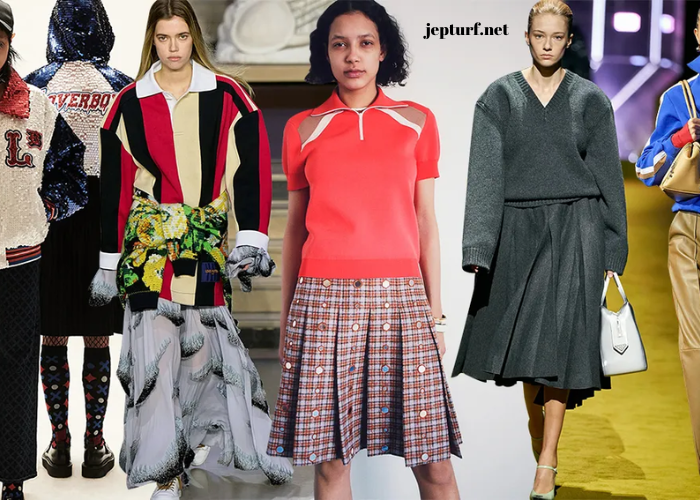Fashion, once a largely exclusive and mysterious world confined to the pages of glossy magazines and the runways of Paris and Milan, has undergone a remarkable transformation in recent years. Thanks to the democratizing power of the internet and changing societal attitudes towards self-expression, fashion has moved from the confines of the closet to the open embrace of the catwalk. In this article, we will explore the dynamic shift in the fashion landscape and how it has allowed individuals to take control of their personal style, influencing the industry at large.
The Evolution of Fashion
To understand the contemporary fashion landscape, it’s crucial to consider how fashion has evolved over time. Historically, fashion was dictated by a small elite of designers, couturiers, and fashion houses. They held the power to decree what was ‘in’ and what was ‘out,’ and the rest of the world followed suit, often with a time lag.
However, the late 20th century marked a turning point. With the advent of television, people could now watch fashion shows from their living rooms. Fashion was no longer the exclusive domain of the privileged few who could attend runway shows. This shift opened a window into the world of fashion, making it more accessible, if not entirely democratic.
The Internet: Fashion’s Game Changer
The real revolution came with the internet. With the rise of online platforms, fashion enthusiasts found a space where they could share their personal style, passion for clothing, and unique interpretations of trends. Fashion bloggers emerged as the first pioneers, sharing their outfit inspirations and connecting with like-minded individuals worldwide.
Social media platforms like Instagram, Pinterest, and TikTok further accelerated this transformation. These platforms gave everyone with a smartphone a front-row seat to the fashion world. Suddenly, anyone could share their outfit of the day (#OOTD), provide style tips, and engage in fashion discussions. The closet became a stage, and everyone could be a performer.
In this digital era, fashion is no longer about simply following trends. It’s about personal expression, creativity, and embracing diversity. The catwalks of the internet are filled with individuals who celebrate their unique style, regardless of whether it aligns with the latest runway collection.
Influence of Street Style
Street style, once relegated to the sidelines of the fashion industry, now plays a pivotal role. Street style refers to the fashion choices of everyday people as they go about their lives, captured by photographers on the streets of major fashion capitals like New York, London, Milan, and Paris.
What was once considered a quirky subculture has now become a driving force in fashion. Street style influencers, often discovered on social media, have become key players in shaping trends. They blur the lines between high fashion and streetwear, proving that style isn’t confined to luxury labels and designer boutiques.
These influencers have the power to turn a simple thrift store find into the hottest trend of the season. They challenge traditional notions of beauty and gender norms, paving the way for greater inclusivity in fashion. The fashion landscape is now a kaleidoscope of styles, reflecting the diversity of the real world.
The Rise of Sustainable Fashion
As fashion democratization continues, consumers are becoming more aware of the industry’s environmental and ethical impact. This awareness has given rise to the sustainable fashion movement. People are increasingly questioning the fast fashion model, characterized by mass production, low-quality garments, and exploitative labor practices.
Sustainable fashion, once seen as a niche, is now gaining mainstream traction. Consumers are demanding transparency and ethical practices from fashion brands. The internet has been instrumental in spreading awareness about sustainable fashion and showcasing alternative, eco-friendly brands.
Moreover, fashion influencers and bloggers are using their platforms to promote sustainable choices. They are demonstrating that style and ethics can go hand in hand, influencing their followers to make conscious fashion decisions. The modern fashion landscape is not just about looking good; it’s about feeling good about the choices we make.
Diversity and Inclusivity
One of the most significant transformations in the modern fashion landscape is the push for diversity and inclusivity. Fashion is no longer a homogenous industry dominated by one idealized standard of beauty. It now celebrates individuality, embracing models and influencers of different ethnicities, body sizes, and gender identities.
This shift towards inclusivity has been partly driven by the public’s demand for more authentic representation in fashion. Social media has provided a platform for marginalized voices to be heard, and fashion brands are listening. They are diversifying their advertising campaigns and runway shows, reflecting a broader spectrum of beauty and style.
Inclusivity isn’t just a buzzword; it’s a fundamental change in how fashion operates. Brands that fail to embrace diversity risk alienating a significant portion of their customer base. The modern fashion landscape demands not just inclusivity as a marketing strategy but as a core value.
The Power of Collaboration
Collaboration has become a cornerstone of modern fashion. In the past, collaborations were mostly limited to established designers working with other high-end brands. Today, collaborations can involve anyone from established fashion houses to emerging designers, artists, and even social media influencers.
These collaborations bridge the gap between the exclusive world of high fashion and the accessible world of everyday style. They create excitement and buzz in the fashion industry, often resulting in limited-edition collections that sell out in minutes. Collaborations also allow for a fresh infusion of creativity and innovation.
Moreover, collaborations enable fashion to reach new audiences. When a popular musician, actor, or influencer partners with a brand, their fan base becomes potential customers. This cross-pollination of industries has blurred the lines between entertainment and fashion, making the modern landscape even more dynamic and interconnected.
Fashion’s Responsibility
With great power comes great responsibility, and the modern fashion landscape is no exception. As fashion becomes more accessible and influential, it must grapple with its environmental and social impacts. Fast fashion’s relentless pursuit of new trends and constant production has contributed to pollution and exploitation.
Fashion brands are now under scrutiny to adopt more sustainable practices, from sourcing materials responsibly to minimizing waste and reducing carbon emissions. Additionally, they are expected to address issues of labor ethics, ensuring fair wages and safe working conditions for all employees in the supply chain.
The modern fashion landscape has given rise to conscious consumers who are informed and demanding change. Brands that fail to adapt to these evolving expectations risk losing relevance and consumer trust. Fashion is not just about style; it’s about values and ethics.
The Future of Fashion
The future of fashion promises to be even more dynamic and inclusive. Technology, particularly augmented reality (AR) and virtual reality (VR), is poised to revolutionize the way we experience fashion. Virtual try-ons and digital fashion shows are becoming more common, allowing consumers to engage with fashion in innovative ways.
Customization will also play a significant role in the fashion landscape of the future. 3D printing and made-to-order models will enable individuals to design their clothing, ensuring a perfect fit and unique style. This shift towards personalization further empowers individuals to take control of their fashion choices.
The fashion landscape will continue to be shaped by the power of social media and influencers. However, authenticity will be the key. Consumers are increasingly drawn to influencers who are genuine, transparent, and aligned with their values.
In conclusion, the modern fashion landscape has undergone a remarkable transformation. From the confines of the closet to the open embrace of the catwalk, fashion has become more accessible, diverse, and inclusive. The internet and social media have played a pivotal role in democratizing







